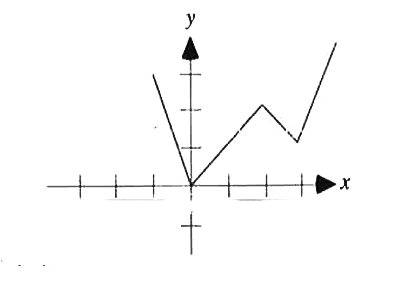Given that interionic distance in Na+,F− crystal is 2.31ÅandrF+=1.36Å, which of the following predictions will be right
rNa+/rF−≈0.7
coordination number of Na+ = coordinatin number of F−=6
Na+,F− will have rock salt type crystal structure
effective nuclear charge for Na+andF− are equal
The correct Answer is:A, B, C
To solve the problem, we need to analyze the given information about the Na⁺ and F⁻ ions in the crystal structure of sodium fluoride (NaF). We will evaluate the statements provided in the question based on the properties of ionic compounds and their structures.
1. Understanding the Ionic Radii and Interionic Distance:
- The interionic distance (d) in Na⁺ and F⁻ crystal is given as 2.31 Å.
- The radius of F⁻ (r_F⁻) is given as 1.36 Å.
- We can find the radius of Na⁺ (r_Na⁺) using the relation:
d=rNa++rF−
- Rearranging gives:
rNa+=d−rF−=2.31Å−1.36Å=0.95Å
2. Calculating the Radius Ratio:
- Now, we can calculate the radius ratio rNa+rF−:
rNa+rF−=0.95Å1.36Å≈0.70
- This confirms that the first statement about the radius ratio being nearly equal to 0.7 is correct.
3. Coordination Number:
- In the rock salt structure (NaCl type), both Na⁺ and F⁻ have a coordination number of 6. This means each ion is surrounded by 6 oppositely charged ions.
- Therefore, the second statement regarding the coordination number of Na⁺ and F⁻ being 6 is true.
4. Structure Type:
- The structure of NaF is indeed similar to that of NaCl, which is a rock salt structure. Hence, the third statement is also true.
5. Effective Nuclear Charge:
- The effective nuclear charge (Z_eff) is not the same for Na⁺ and F⁻, even though they are isoelectronic (having the same number of electrons).
- Na⁺ has 11 protons, while F⁻ has 9 protons. Therefore, the effective nuclear charges will differ due to the different number of protons in the nucleus.
- Thus, the fourth statement about the effective nuclear charge of Na⁺ and F⁻ being equal is false.
Conclusion:
- The correct statements are:
1. rNa+rF−≈0.7 (True)
2. Coordination number of Na⁺ and F⁻ is 6 (True)
3. NaF has a rock salt type of structure (True)
4. Effective nuclear charge of Na⁺ and F⁻ are equal (False)
Final Answer:
The predictions that are right are statements 1, 2, and 3.
---
- The interionic distance (d) in Na⁺ and F⁻ crystal is given as 2.31 Å.
- The radius of F⁻ (r_F⁻) is given as 1.36 Å.
- We can find the radius of Na⁺ (r_Na⁺) using the relation:
d=rNa++rF−
- Rearranging gives:
rNa+=d−rF−=2.31Å−1.36Å=0.95Å
- Now, we can calculate the radius ratio rNa+rF−:
rNa+rF−=0.95Å1.36Å≈0.70
- This confirms that the first statement about the radius ratio being nearly equal to 0.7 is correct.
- In the rock salt structure (NaCl type), both Na⁺ and F⁻ have a coordination number of 6. This means each ion is surrounded by 6 oppositely charged ions.
- Therefore, the second statement regarding the coordination number of Na⁺ and F⁻ being 6 is true.
- The structure of NaF is indeed similar to that of NaCl, which is a rock salt structure. Hence, the third statement is also true.
- The effective nuclear charge (Z_eff) is not the same for Na⁺ and F⁻, even though they are isoelectronic (having the same number of electrons).
- Na⁺ has 11 protons, while F⁻ has 9 protons. Therefore, the effective nuclear charges will differ due to the different number of protons in the nucleus.
- Thus, the fourth statement about the effective nuclear charge of Na⁺ and F⁻ being equal is false.
- The correct statements are:
1. rNa+rF−≈0.7 (True)
2. Coordination number of Na⁺ and F⁻ is 6 (True)
3. NaF has a rock salt type of structure (True)
4. Effective nuclear charge of Na⁺ and F⁻ are equal (False)
The predictions that are right are statements 1, 2, and 3.
Topper's Solved these Questions
- BOOK - RESONANCE ENGLISHCHAPTER - SOLID STATEEXERCISE - Part-III (One or more than one option correct type)3videos
SOLID STATE
- BOOK - RESONANCE ENGLISHCHAPTER - S BLOCK ELEMENTSEXERCISE - ORGANIC CHEMISTRY(Biomolecules & Polymer)4videos
S BLOCK ELEMENTS
- BOOK - RESONANCE ENGLISHCHAPTER - STRUCTURAL IDENTIFICATION & PRACTICAL ORGANIC CHEMISTRYEXERCISE - Section -B18videos
STRUCTURAL IDENTIFICATION & PRACTICAL ORGANIC CHEMISTRY
Similar Questions
Knowledge Check
- Question 1 - Select One
The graph of y=f(x) is shown to the right. If f(−1)=v, then which one of the following could be the value of f(v) ?
 A0B1C2D2.5
A0B1C2D2.5
Give the decreasing order of melting points of the following compounds:
i. NaF ii. BeO iii. MgO iv. SrO
Given: The inter-ionic distance in Å as
NaF=2.31,BeO=1.65,MgO=2.106,SrO=2.58
b. Given the decreasing order of hardness of the following compounds:
i. CaO ii. BeO iii. TiC
Given : The inter-ionic distances in Å as
CaO=2.405,BaO=2.762,TiC=2.159View SolutionIf the ionic radii of each K+ and F− are 1.34Å, then tha atomic radii of K and F will be respectively:
View SolutionLet f:R→R be a function defined byf(x)=min{x+1,|x|+1}. Then, which of the following is true?
View SolutionLet f:R→R defined by f(x)=min(|x|,1−|x|), then which of the following hold(s) good ?
View SolutionThe ionic radii for Na+ and Br− ions are 1.012Å and 1.973Å respectively. What is the coordination number of Na+ predicted on the basis of the radii ratio. r+r−?
View SolutionRay diagram for two lenses kept at some distance given in the diagram, which of the following option is correct (f1,f2 = focal length, d = distance between lenses)
 View Solution
View SolutionConsider a differentiable function f:R→R for which f'(0)=ln2andf(x+y)=2xf(y)+4yf(x)∀x,y∈R which of the following is /are correct?
(a) f(4)=240
(b) f'(2)=24ln2
(c) The minimum value of y−f(x) is −14
(d) the number of solutions of f(x)=2 is 1View Solution

